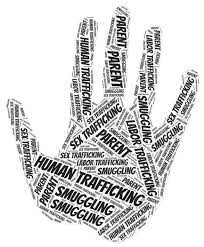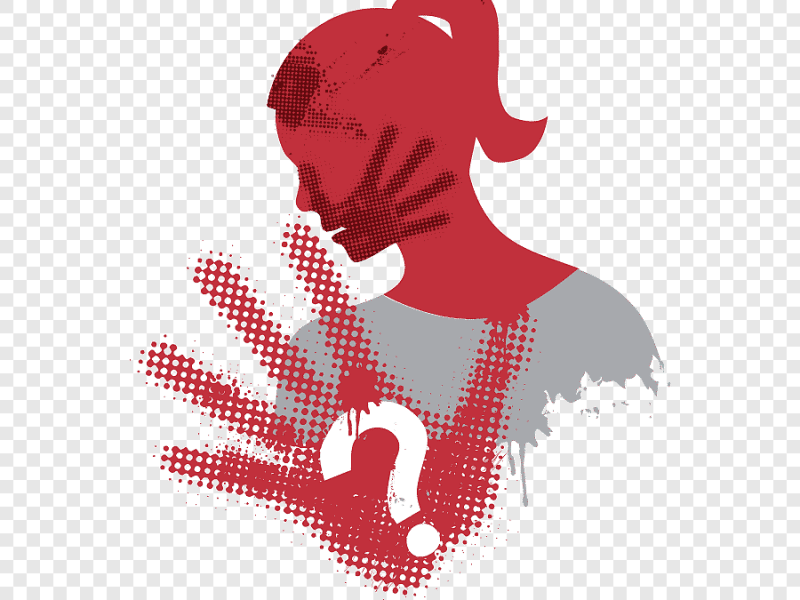
The Life Story: Moments of Change is a groundbreaking website and film project supported by NoVo Foundation that shines a light on the stories and experiences of women in the sex trade—also referred to as ‘the Life.' Their goal is to provide better solutions that can prevent all girls and all women, cis, trans, and gender non-conforming, from being exploited in the first place and raise awareness around the issue so that better resources can be put in place to help women exit the Life.
In the two previous articles in this four-part series, we looked at how experiencing early childhood trauma makes girls and women prime targets for sexual exploitation, which ultimately leads to them entering into the Life. Now we’ll delve into the next phase of being in the Life; hearing personal insights from survivors and looking at the daily realities of being in the sex trade and the challenges these women and girls face that keep them stuck in the Life, with no clear way out.
There are several factors for women in the Life that can create a vicious cycle that makes it nearly impossible to break free. We’ll be taking a close look at three of these: drug and alcohol addiction, motherhood, and being criminalized by law enforcement.

Addiction

“I was kept in the Life because of my drug habit.”
-Quintecia, Survivor, Advocate, and Service Provider
Drug addiction is one of the main factors that keep women in the grips of the sex trade. According to one study, eighty-four percent of women used alcohol, drugs or both during their exploitation.
There is a common misconception by the general public that women frequently enter the Life to support a drug habit and that, therefore, drug addiction leads to prostitution. That may be true for some women, but for many the reverse it true: it is prostitution, and the related trauma that it causes, that leads to drug addiction.
Since the vast majority of women and girls in the Life experience some type of trauma in their early childhood years—whether it is abuse, violence, or neglect—they are prime targets for sexual exploitation later in life. And once they enter the Life, their trauma not only continues but is intensified day after day as they face the realities of being in the sex trade. As a coping strategy, women and girls turn to drugs and alcohol to numb the pain, sending into motion a toxic cycle of trauma, sexual exploitation, and addiction.
Survivor, advocate, and service provider Quintecia told me how she turned to drugs as a way to try to escape the reality of the Life: “You don’t want to think about all of the things that are making you feel miserable and depressed inside, so you’re going to use drugs to numb that. You’re going to do everything in your power to not feel that way. So you don’t stop using, which means you don’t stop prostituting. It’s 24 hours, 7 days a week.”
Nicole Matthews, Executive Director of the Minnesota Indian Women’s Sexual Assault Coalition, put it this way: “Imagine the trauma experienced by a woman who is raped. Now imagine the trauma for a woman who is essentially sexually assaulted over and over for years. We now know that’s complex trauma. And that’s what survivors of prostitution are trying to overcome.”
So how can women break free from this cycle of trauma, sexual exploitation and addiction? The solution lies in combining the expertise of service providers and creating resources that can holistically treat trauma, substance abuse, and exploitation. Currently, most service providers are only trained to identify and address just one of these issues, but since they are all intertwined, we must explore ways to treat all three.
As Noel Gomez, Director & Co-founder of The Organization for Prostitution Survivors, explained it, “Addressing chemical dependency alone isn’t enough. If you don’t deal with the other issues, it will lead the person back to using. All issues must be addressed.” By providing resources that help women overcome addiction, heal from trauma, and give them a means of exiting the Life, that cycle can be broken once and for all.
Motherhood
 “You always have this fear in the back of your mind that you are going to lose your children.”
“You always have this fear in the back of your mind that you are going to lose your children.”
— Robin, Survivor Leader and Case Manager
Becoming a mother adds another layer to the already challenging reality of being in the Life. And many girls and women do become pregnant while in the Life, often by their trafficker. In one study, 71 percent of trafficking victims reported at least one pregnancy while being trafficked.
When a woman becomes a mother, her basic needs for income, food and shelter dramatically increase, which means she’ll often feel as if she has no choice but to stay in the Life in order to provide for her child.
As survivor and service provider Quintecia explains it, “There comes a point when we can’t provide the things that we want. When somebody opens up a door for me to provide better for my house, because I love these kids, I’m going to try that out. Because we sacrifice for our family—it’s human nature.”
Mothers in the Life also experience the added fear of having their children taken away from them. If a mother in the Life seeks help from social services, law enforcement, or addiction services in an effort to exit the Life, these systems may see her as a threat to her children instead of a mother seeking the help she needs. So she feels trapped between two choices: seek help and risk losing her kids, or stay in the Life and keep the family together.
How can we make it easier for a mother in the Life to reach out for the help she needs? The first step is to better train and educate service providers in the various social systems so that they can see beyond the stigma surrounding a mother in the Life and better understand her dilemma. With an increased level of understanding and empathy, service providers will be able to help her access the support she and her children need, while focusing on keeping them together.
The second part of the solution is to holistically address the multiple needs of a mother and her children, which may include childcare, job placement, addiction services, therapy, and housing. Since most social agencies are overburdened, under-resourced, and address only one part of the larger picture, getting teams of diverse providers to combine their expertise and services could successfully address all of the family’s needs, ultimately allowing the mother to break free from her dependence on her exploiter and the Life.
Law Enforcement
“I never had a police officer say, ‘Hey, are you okay? Do you need help? Are you safe?’”
—Roxanne, Indigenous Survivor and Advocate
Women and girls will likely have several encounters with law enforcement while in the Life. Although many police officers are a potential resource who could help them leave the sex trade, women in the Life often see law enforcement as a threat. And rightfully so, since most criminal justice systems across the US criminalize women in the Life (while the men who bought and sold her walk free), and many women have even been physically or sexually assaulted by police officers.
Indigenous survivor and advocate Roxanne described how she experienced encounters with law enforcement: “I’ve been targeted and harassed by police, even threatened with bodily harm. Nobody’s ever just stopped and said, ‘Do you need help?’ I wish they could just really look at how they view us and how they talk to us.” She feels more training and education would help the situation. “I think police officers need a lot of education. It would be nice for them to be subjected to some panels and actually meet some survivors and actually hear their stories and actually see us as people, because we are. We’re somebody’s mother, somebody’s daughter. Stop dehumanizing us.”
Mike Gallagher, a police officer in the sex trafficking unit in Portland, Oregon, agrees that law enforcement needs to shift the perception of women in the Life: “The biggest thing is law enforcement not seeing the whole picture, not seeing these women as victims but seeing prostitution as a crime.” In addition to training and education, another solution is to decriminalize prostitution for women in the Life. As Mike explains it, “We prefer not to arrest the victims that are involved in prostitution. We used to arrest about 80% women and 20% men. Now it’s the other way around. About 80% of our prostitution-related arrests are the buyers and sellers of women. We're trying to get men to understand that they're a huge part of this problem. If you have no buyers, we don't have a prostitution problem.”
Maheen Kaleem, former staff attorney at Rights4Girls and Program Officer at the NoVo Foundation, agrees: “No person who sells sex or sexual acts should be criminalized, and we should remove those penalties because we understand how a lot of different oppressions combine to render particular women and girls vulnerable to enter the sex trade in the first place. We need to stop criminalizing the people that sell and hold accountable the exploiters and buyers.”
Decriminalizing women who sell sex would mean that they wouldn’t have to be afraid to seek out help from police and other first responders and providers. It would also mean that they wouldn’t develop a criminal record that today prevents so many women in the Life from receiving the services they need to exit the sex trade.
Maheen put it this way, “If we think about women who are trafficked who are coming in with prostitution convictions, that literally prevents them from accessing safe and stable housing. So then you don’t have stable housing, and you might not have had a formal or consistent education. So your likelihood of engaging either in prostitution or other forms of criminal activity is increased because that’s the only way that you can meet your basic needs. And the reason that drives you further into the system is because the only way to meet your basic needs is by engaging in criminal activity, and then you’re criminalized for it, and those convictions, as they pile on, make it harder and harder and harder to survive.”
In addition to focusing on criminalizing the buyers and not the women, some places like Portland have found success in creating anti-trafficking task forces that connect law enforcement with various groups and agencies within the community to provide victim services, drug counseling, addiction treatment, mental health services, group therapy, and even mentorship. With all of these groups working together and combining their expertise and services, women receive support in all of the areas they need it.
If more cities could follow Portland’s example and adopt similar practices, it could make all the difference for women across the country who are stuck in the Life.
Stay tuned for the next article in this series where we’ll look at exit ramps from the Life. For more information on The Life Story: Moments of Change project, visit www.thelifestory.org
 Marianne Schnall is a widely-published interviewer and journalist and author of ‘What Will It Take to Make a Woman President? Conversations About Women, Leadership & Power’. She is also the co-founder and Executive Director of the women’s website and non-profit organization feminist.com(https://www.feminist.com), and co-founder of What Will It Take Movements (https://www.whatwillittake.com
Marianne Schnall is a widely-published interviewer and journalist and author of ‘What Will It Take to Make a Woman President? Conversations About Women, Leadership & Power’. She is also the co-founder and Executive Director of the women’s website and non-profit organization feminist.com(https://www.feminist.com), and co-founder of What Will It Take Movements (https://www.whatwillittake.com


